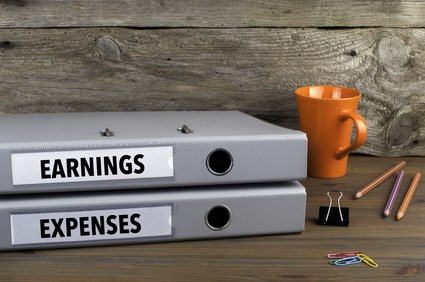Whatever type of business you have the aim is to have more income than your expenses leaving you with enough profit to have enough money for you to take to live on and pay your taxes.
Every business owner has differing income needs and often one of the drivers for being self-employed and setting up a business is to earn more than you are currently being paid as an employee. Whatever the reason, creating enough income to pay your personal bills and develop the lifestyle you dream of means making a profit.
Sometimes that profit will only come by growing your business and employing people but some businesses can make enough profit for themselves without relying on others. However there are individuals in business who have no idea what it costs to run their business on a monthly basis and don't have enough profit to pay for the lifestyle they have or for their taxes.
What are your fixed costs?
Every business has fixed costs - definitely telephone, insurance and software but possibly also rent, rates, and company vehicle running costs. These fixed costs have to be paid however much your income is so you need to know how much income you need each month to cover these fixed costs. Your own income is not classed as a fixed cost if you are a sole trader so if your income only just covers your outgoings you will not be left with any earnings for yourself.
Calculate the income you need to receive monthly
- Monthly overheads (telephone, insurance, etc)
- Plus costs necessary to create an income (Cost of Sales)
- Plus the income you would like to take
- Plus an amount for your potential tax bill
This will give you a break-even figure. You will need to have an income greater than this to create a profit to re-invest in your business if you want more or new software, to change your vehicle, to buy additional tools, have more earnings, etc:
What can you charge?
You need to be realistic about what you can charge your customers. There is no point calculating what profit you need to make to give you the income you want if the cost is too high in your industry for your customer to pay. If you need to charge more to achieve what you need you will have to either find a niche market which will pay that, reduce your costs or reduce your earning expectations (at least until your business is established and growing). Alternatively you can employ one or more people who can help increase your income but of course this will increase your overheads. However this can be beneficial if your charges to your customer are higher than the employee costs (salary, employers NI and employer pension).
Taking VAT into account
Once you have reached the VAT threshold of £85,000 over a 12 month period you will need to increase your customer charges by 20% but you will be able to claim back VAT on your expenses (depending on the VAT scheme you choose). This will, of course, increase your income but the additional 20% is not all yours to spend so should not be accounted for in your profit calculation. This may not matter if your customers are all businesses which are VAT registered but you may find you lose customers if they are individuals who are not VAT registered because they don't want to pay the additional 20%.
Summary
Businesses who understand what they need to earn each day, week or month to cover their costs can better manage their business and their lifestyle.
Each business must work out whether it is financially viable for them to work less days during the week, whether having an employee means better profit despite the additional cost or whether increasing income pushes you into being VAT registered which may not be beneficial for your business.
Your bookkeeper should be able to tell you costs of running your business and will work through various scenarios with you to ensure you are achieving what you need to achieve.

